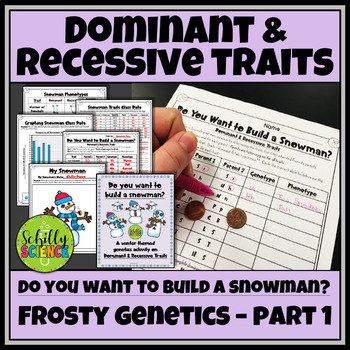

Dominant traits list Patch#
Patch white spotting patterns include Appaloosa, Dominant White, Sabino 1, Splashed White, Tobiano, and Overo. Grey horses will progressively loose pigment distributed in the coat as they age. Classic Roan horses have fully or nearly fully pigmented faces but white hairs are distributed throughout the coat. Both classic Roan and Gray are caused by dominant mutations. Distributed white patterns, in which white hairs are intermixed with colors hairs, include classic Roan and Gray. White spotting patterns can be divided into distributed white or patch white patterning. These can occur on any base color and in combination with any dilution mutation. There are several genes responsible for white coat patterns in horses. Bay horses homozygous for the mushroom phenotype have a lighter shade of red body with black counter shading, suggesting that Mu increases black pigment production having the opposite effect on black pigment as it does on red.Ĭurrent genetic tests for dilution mutations in the horse include: Chestnut horses who are homozygous for Mu will have a dilute sepia coat phenotype. The mushroom allele ( Mu) is recessive and dilutes red pigment. Horses with two copies of silver ( Z/Z) have a more severe phenotype than those with one ( N/Z). Horses with the silver mutation, regardless of base coat color, have an ocular condition known as multiple congenital ocular anomaly or MCOA for short. Chestnut horses with the sliver mutation do not show a different coat color phenotype than those chestnut horses without the silver mutation, as silver does not dilute red pigment. Silver is interesting because it primarily affects black pigment of the points (black and bay horses). Pearl is an allele at the same locus at Cream ( SLC45a2) but is recessive two copies of the Pearl allele ( Prl/Prl) or one copy of Pearl and one of Cream ( Prl/Cr, this is known as a compound heterozygote) are needed to see the dilution effect on the coat.Ĭhampagne, Dun, and Silver are all dominant traits, and therefore only one copy of dilution causing allele is needed to produce the respective phenotypes. Two doses of the Cream allele ( Cr/Cr) produce cremellos on a chestnut background, perlinos on a bay background, and smoky creams on a black background. Cream is dominant and has a dosage effect in that a single copy of the cream allele ( N/Cr) produces palominos on a chestnut background and buckskin on a bay background. Molecular characterization of six different dilution phenotypes in horses include Cream, Champagne, Dun, Pearl, Silver, and Mushroom. Some dilute both the coat and the points (mane, tail, lower legs, ear rims), while others primarily dilute the points, and still others leave the points unaffected and only dilute the coat. Some of these dilution genes affect only one type of pigment (red or black) while others affect both (red and black).

There are several genes that that have been shown to reduce the amount of pigment produced and/or reduce the amount transferred from the pigment cell to the hair follicular cells, and these are know as dilution genes. The genetics behind the variability in shade in horses is something we still have a lot to learn about. While, over 300 different genes have been identified that contribute to mammalian pigmentation, for many of these their contribution to equine pigmentation variation remains unknown. For example, some horses are a very dark chestnut known as liver chestnut while others are a much lighter yellow shade. This variability has been described as shade. Variability exists among the three basic coat colors. The dominant allele ( A) restricts black pigment to the points of the horse (mane, tail, lower legs, ear rims), while the recessive form ( a) distributes black pigment uniformly over the body.Ĭurrently, genetic tests for the three basic coat colors include: Agouti and Red Factor ASIP, also known as Agouti, controls the distribution of black pigment.

In homozygous individuals ( e/e or e a/e a) only red pigment is produced, hence the name red factor. The e and e aalleles are recessive to E and are considered to be loss of function mutations in MC1R. To date, there are three versions ( alleles) of this gene that have been identified at the molecular level: E, e, and e a. MC1R, which has also been referred to as the extension or red factor locus, controls the production of red and black pigment. These are controlled by the interaction between two genes: Melanocortin 1 Receptor ( MC1R) and Agouti Signaling Protein ( ASIP).

The basic coat colors of horses include chestnut, bay, and black. Equine Coat Color Genetics Base Coat Color


 0 kommentar(er)
0 kommentar(er)
